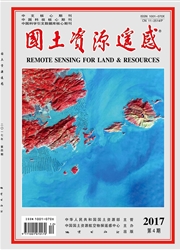

 中文摘要:
中文摘要:
以浙江省为研究区,利用收集到的LandsatTM图像、DMSP/OLS夜间灯光数据及其他辅助数据,开展区域城镇扩张监测方法的研究,并在此基础上分析了浙江省1995-2010年间城镇扩张的时空特征。结果表明:基于分类回归树算法,综合利用TM数据和DMSP/OLS夜间灯光数据,可精确稳定地提取城镇信息;1995-2010年间,浙江省城镇用地持续增加,除洞头县、庆元县、文成县、云和县、兰溪市、龙泉市和绍兴市等7个县市扩张加速度有所减缓外,全省其余市、县均处于加速扩张阶段;浙江省城镇扩张地域差异明显,表现为沿海地区的城市化水平整体高于内陆地区,地势平坦地区高于地形复杂地区,从而形成了杭州、绍兴、温州3大沿海城市群和以金华为中心的内陆地区中小城市带。
 英文摘要:
英文摘要:
Acquiring urban information and dynamically monitoring urban expansion forms constitute important parts of remote sensing technique in the field of resource and environment application. As a coastal province, Zhejiang has experienced a rapid economic development in the past 20 years. At the same time, its urban expansion phenomenon is significant. With Zhejiang Province as the study area, the authors obtained the spatial distribution information of urban land from Landsat TM data by using the CART algorithm. Under the condition of getting accurate classification results, the urban expansion spatial - temporal features of Zhejiang Province from 1995 to 2010 were analyzed. Applying CART to extracting urban information from TM data and optimized with NTL is an effective and adaptable method for monitoring regional urban expansion. During the past 15 years, the expansion acceleration of most cities is greater than zero, except for Dongtou, Qingyuan, Wencheng, Yunhe, Lanxi, Longquan and Shaoxing. From 1995 to 2010, Xiaoshan, Yuhang, Ningbo remained the first three cities in this aspect. It is shown that the urbanization levels of various cities are significantly different from each other. The urbanization level of coastal cities and cities in the terrain fiat area is higher than that of the non - coastal cities and cities in the complicated topography area. As a result, the first three large coastal cities, which are Hangzhou, Shaoxing and Wenzhou, and the zone of small and medium sized cities in the non - costal area around Jinhua have been developed.
 同期刊论文项目
同期刊论文项目
 同项目期刊论文
同项目期刊论文
 期刊信息
期刊信息
